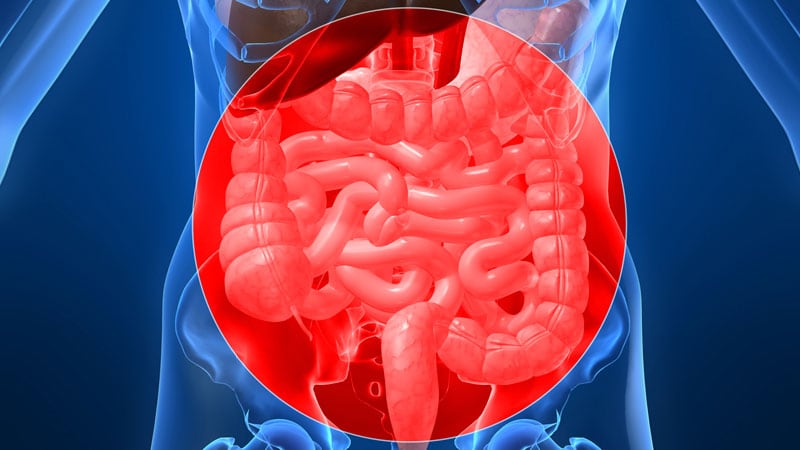Although widely endorsed, treat-to-target (T2T) colonoscopy to gauge mucosal healing in patients who’ve started a new treatment for inflammatory bowel disease (IBD) remains underutilized in clinical practice.
Data from the ongoing Study of a Prospective Adult Research Cohort With IBD (SPARC IBD) suggest that only about half of patients with IBD undergo colonoscopy in the 3 to 15 months after starting a new IBD treatment.
There was variation in the use of T2T colonoscopy among the 17 SPARC IBD study sites, which suggests a “lack of consensus and a need for more robust evidence associating the practice of routine monitoring colonoscopy with improved patient outcomes,” the researchers say.
The study was published online April 13 in The American Journal of Gastroenterology.
Endoscopic healing has been associated with improved long-term clinical outcomes for patients with IBD and is a recommended target for treatment. Yet the degree to which T2T colonoscopy is being utilized in routine clinical practice to assess endoscopic remission following treatment initiation in patients with IBD is unclear.
To investigate, Michael Kappelman, MD, MPH, with the University of North Carolina at Chapel Hill, and colleagues identified 1708 SPARC IBD patients (median age, 38 years; 55% women) who initiated a new medication between 2017 and 2022. Two thirds of patients had Crohn’s disease.
The most common medications were ustekinumab (32%), infliximab (22%), vedolizumab (20%), and adalimumab (16%).
Over the entire study period, only 21% of patients underwent colonoscopy in the 3 to 6 months after starting medication; this increased to 44% by 12 months and to 49% by 15 months, the researchers report.
The rate at which colonoscopy was performed was similar among patients with ulcerative colitis (50%) and Crohn’s disease (49%), but the rate was slightly higher among men than women (51% vs 48%), as well as among patients older than age 40 in comparison with patients younger than 40 (53% vs 46%) and among Black vs White patients (55% vs 49%). Colonoscopy use varied widely between study sites, from 27% to 63%.
The rate at which colonoscopies were performed did not appear to change by calendar year of medication initiation, although there was a slight drop after 2019, which may reflect decreased healthcare utilization due to the COVID-19 pandemic.
Yet even prior to the start of the SARS-CoV-2 pandemic, almost 40% of patients for whom medication was initiated did not undergo colonoscopy in the following 3 to 15 months, the authors write.
There were no significant differences in colonoscopy use by the type of IBD medication that was initiated.
The findings are “generally consistent with prior literature regarding real-world utilization of T2T colonoscopy in patients treated for IBD,” the researchers write.
“The hesitancy to recommend and perform T2T colonoscopy may, in part, be due to current gaps in real-world evidence around the effectiveness of T2T colonoscopy,” Kappelman and colleagues say.
“Although endoscopic remission has been associated with improved long-term outcomes, the utility of actually performing routine monitoring colonoscopy, and changing therapies based on residual inflammation observed on these colonoscopies, has not been thoroughly studied,” they add.
Effect on Outcomes Unknown
The findings are “interesting but not particularly surprising,” said Ashwin Ananthakrishnan, MD, MPH, with Massachusetts General Hospital and Harvard Medical School in Boston, Massachusetts, who was not involved in the study.
It will be “important to examine if this variability contributes to differences in patient outcomes,” Ananthakrishnan told Medscape Medical News. “If that is demonstrated, then it is important to dive deeper into reasons for variability and increase rates of colonoscopy posttreatment initiation. Unfortunately, this study is not designed to capture (yet) the impact of such variability on outcomes.”
Because half the study was conducted during the COVID pandemic, it is somewhat difficult to generalize the findings, Ananthakrishnan added.
“Also, it may be that other patients had calprotectin or other objective measurement of disease activity. So just because they did not have a colonoscopy does not mean that a treat-to-target paradigm was ignored,” he said.
Jami Kinnucan, MD, a gastroenterologist at Mayo Clinic, Jacksonville, Florida, said that a “big limitation” is the study’s overlap with the pandemic period, when there was a decline in procedural testing.
“I do suspect that these patients did have follow-up testing in other noninvasive forms, so I don’t think that it highlights the lack of follow-up, but it does highlight that endoscopic evaluation is not happening in at least 50% of patients within initiation of new therapy for many factors,” she told Medscape Medical News.
Kinnucan, who was not involved in the research, said this study highlights the importance of “improved provider education with a focus on nonphysician providers who are many of the providers caring for our IBD patients, strategies to automate the T2T approach once a therapy is initiated, patient education about the importance of endoscopic evaluation after treatment initiation, and further studies supporting evidence that endoscopic healing as a target has greater value than noninvasive testing.”
“It will be interesting to see in coming years how intestinal ultrasound will be incorporated as a target and could this replace endoscopic evaluation in patients, given it is low cost, noninvasive, and point of care,” she added.
Funding for the study was provided by the National Institutes of Health, the University of North Carolina Royster Society of Fellows, and the University of North Carolina Center for Pharmacoepidemiology. The authors, Ananthakrishnan, and Kinnucan have disclosed no relevant financial relationships.
Am J Gastroenterol. Published online April 13, 2023. Abstract
For more news, follow Medscape on Facebook, Twitter, Instagram, and YouTube
Source: Read Full Article



